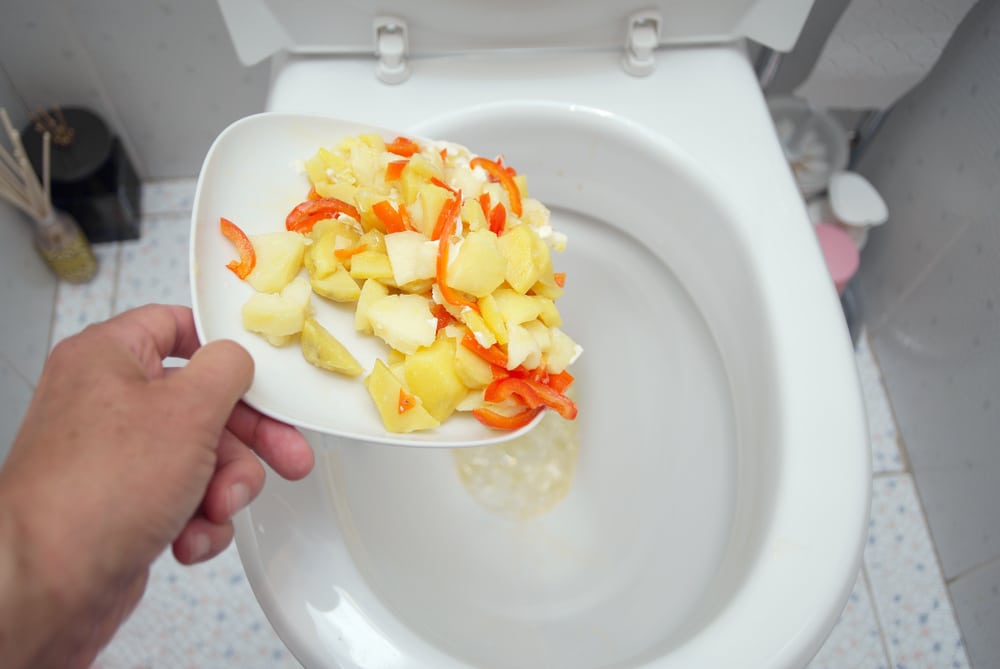Is it Logical to Flush Food in the Toilet?
Is it Logical to Flush Food in the Toilet?
Blog Article
They are making a number of good observations related to Flushing Food Down the Toilet? as a whole in this article in the next paragraphs.

Intro
Lots of people are commonly confronted with the issue of what to do with food waste, especially when it concerns leftovers or scraps. One typical concern that occurs is whether it's okay to purge food down the bathroom. In this post, we'll look into the reasons individuals could take into consideration purging food, the repercussions of doing so, and alternate methods for proper disposal.
Reasons individuals may consider flushing food
Lack of awareness
Some individuals might not recognize the prospective damage brought on by purging food down the bathroom. They might mistakenly think that it's a harmless practice.
Convenience
Purging food down the bathroom may seem like a fast and easy option to taking care of undesirable scraps, especially when there's no close-by trash can offered.
Idleness
Sometimes, individuals might just select to flush food out of large idleness, without considering the effects of their activities.
Consequences of flushing food down the toilet
Ecological impact
Food waste that winds up in waterways can contribute to air pollution and damage marine ecosystems. Furthermore, the water utilized to purge food can stress water sources.
Plumbing concerns
Flushing food can lead to blocked pipes and drains pipes, creating expensive pipes repair work and aggravations.
Sorts of food that should not be flushed
Coarse foods
Foods with fibrous structures such as celery or corn husks can obtain entangled in pipes and create clogs.
Starchy foods
Starchy foods like pasta and rice can take in water and swell, bring about blockages in pipelines.
Oils and fats
Greasy foods like bacon or food preparation oils need to never ever be purged down the toilet as they can solidify and trigger blockages.
Appropriate disposal methods for food waste
Utilizing a waste disposal unit
For homes geared up with waste disposal unit, food scraps can be ground up and purged with the plumbing system. However, not all foods appropriate for disposal in this fashion.
Recycling
Particular food product packaging products can be recycled, reducing waste and minimizing environmental effect.
Composting
Composting is a green way to get rid of food waste. Organic products can be composted and made use of to improve soil for horticulture.
The importance of correct waste monitoring
Decreasing environmental damage
Appropriate waste administration practices, such as composting and recycling, help minimize air pollution and preserve natural resources for future generations.
Protecting pipes systems
By staying clear of the practice of flushing food down the toilet, homeowners can prevent expensive plumbing repair services and keep the integrity of their pipes systems.
Final thought
To conclude, while it might be alluring to purge food down the commode for convenience, it's important to understand the possible effects of this action. By adopting correct waste monitoring methods and disposing of food waste sensibly, individuals can add to much healthier plumbing systems and a cleaner setting for all.
FLUSH FOOD DOWN THE TOILET?
FLUSHING FOOD CAN CAUSE BLOCKED DRAINS IN YOUR HOME
All of the plumbing fixtures in your home are connected to the same sewer pipe outside of your home. This outdoor sewer pipe is responsible for transporting all the wastewater from your home to the Council sewer mains. Even small pieces of food that go down the kitchen sink can cause problems for your sewer. It should therefore be obvious that flushing larger bits of food, such as meat, risks a clog in either the toilet itself or the sewer pipes. Flushing greasy food is even more problematic because oil coagulates when it cools, coating the interior lining of your pipes.
THE TOILET IS NOT A BIN
Food isn’t the only thing that people shouldn’t be flushing down the toilet. People use the toilet to dispose of all kinds of things such as tampons, makeup wipes, dental floss, kitty litter and even underwear. Water goes to great lengths to educate residents about the high costs and stress placed on wastewater treatment systems simply from people flushing the wrong stuff down the toilet. It costs taxpayers millions of dollars each year, and homeowners thousands in blocked drain repairs.
FLUSHING FOOD IS A WASTE OF WATER
Flushing food is a waste of our most precious resource - water. In June this year Level 1 water restrictions were introduced to protect water supply from drought conditions. Much of New South Wales continues to be affected by prolonged drought with recent figures revealing up to 97 per cent of the state remains in drought. Depending on whether you have a single or dual flush toilet, every single flush uses between five and 11 litres of water. In the current climate this is a huge amount of water to be wasting on flushing food that should be placed in the bin (or better yet, the compost).
https://www.jabplumbingsolutions.com.au/blog/can-you-flush-food-down-the-toilet

I discovered that blog entry about while doing a lookup on the search engines. Those who appreciated our blog posting if you please remember to pass it around. Kudos for being here. Return soon.
Call Today Report this page